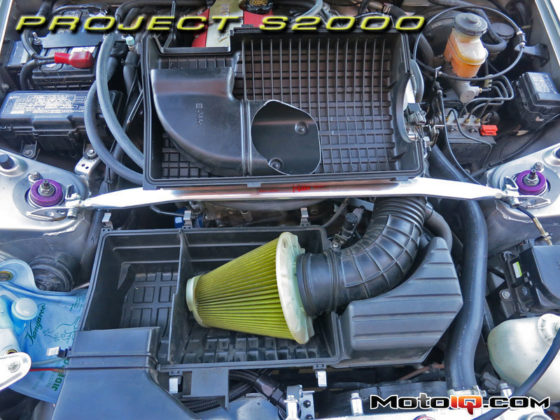
Wrench Tip: Why Tire Age Really Matters
Dave Coleman told you how to figure out how old your tires are by looking at the date code. He also mentioned that older tires tend to be greasy when you push them to the limit. However there's one other thing he didn't mention that's rather important when shopping for used tires.

One day, my mom got a flat in her Accord courtesy of a failed valvestem. Of course she called her local nerd and had me come to put a spare on. The Accord comes with a donut spare and of course she hadn't checked it in ages so it was flat too. Instead I pulled the spare from my CR-V, which is not only full size, but actually had air in it. The tire was a brand new Bridgestone that had been installed when Honda first built the car in 1998. The wheel fit perfectly and we were able to get the Accord's wheel fixed the next day.
Fast forward to a few weeks later and when I was unloading my trunk I noticed the spare tire cover looked a bit lumpy. So I pulled off the cover and you can imagine the pants crapping that ensued when I saw this underneath.

When a tire is made, steel belts are wound around the inner liner and fused with rubber. The tread is bonded to these belts and that is what makes up the tire. The tire maker will bake the tire when it's being molded to help this bonding process work. But the process isn't complete until the tire is mounted onto a wheel, that wheel is bolted to a car, and you drive on those tires for a few hundred miles. Those miles will heat up the tire and finalize the bond between the belts and the tread. Because this tire was brand new and had never been driven on, that last bit of bonding never happened. Couple that with the fact that this tire spent all 13 years of its life outside and only partially protected by a flimsy bit of canvas, and you get the above.
Thankfully this failure happened while the tire was mounted on the trunk and not on an axle. Had the latter been the case, I probably wouldn't be driving a CR-V anymore. It should be noted that this tire was still holding air: only the belts and tread carcass failed. Also, this was discovered 300 miles from home…glad we didn't get a flat ourselves!
So that's the lesson of the day. When shopping for old tires, make sure they've been driven on. Also, make sure they aren't old enough to be getting their learner's permits.




2 comments
Michelin has advised me that tire life is 10 years. Is there a method(s) to tell if a tire is still has useable life? I just acquired a car with Michelin Sport Cup 2 tires that are almost 8 years old. Is the rubber hardness an indication? Is a durometer hardness measurement a reliable way to tell?
Thanks
In my experience, there really isn’t a hard and fast rule, more a bunch of suggestions that will point you in the right direction. Conditions that degrade tires are:
-Outdoor storage (UV exposure will dry rot tires and temperature swings will also harden rubber)
-Parking (parking for long durations will create flat spots on the bottom of the tire)
-High miles (depends on the tire, but obviously low tread is unsafe and lots of heat cycles, especially in a performance tire will also degrade them)
Things you should look out for:
-Cracking: Any signs of cracking means the rubber is compromised and should be replaced
-Uneven or heavy wear: self explanatory, worn tires need to be replaced!
-Discoloration: shows the tires have been exposed to a lot of sunlight and are degraded
However I think there is something much more important you should consider: I gather the car you bought is high performance and fairly expensive. All of your power, handling, and braking goes through those four tires. If you decide to not spend the money on new tires, you will regret it the moment one of them delaminates and shreds your wheel, suspension, and fender. Or you’ll regret it when you lose grip in the rain and go off the road.
Cars are expensive. Tires are cheap. Get the new tires and protect your new toy. You will not regret it.